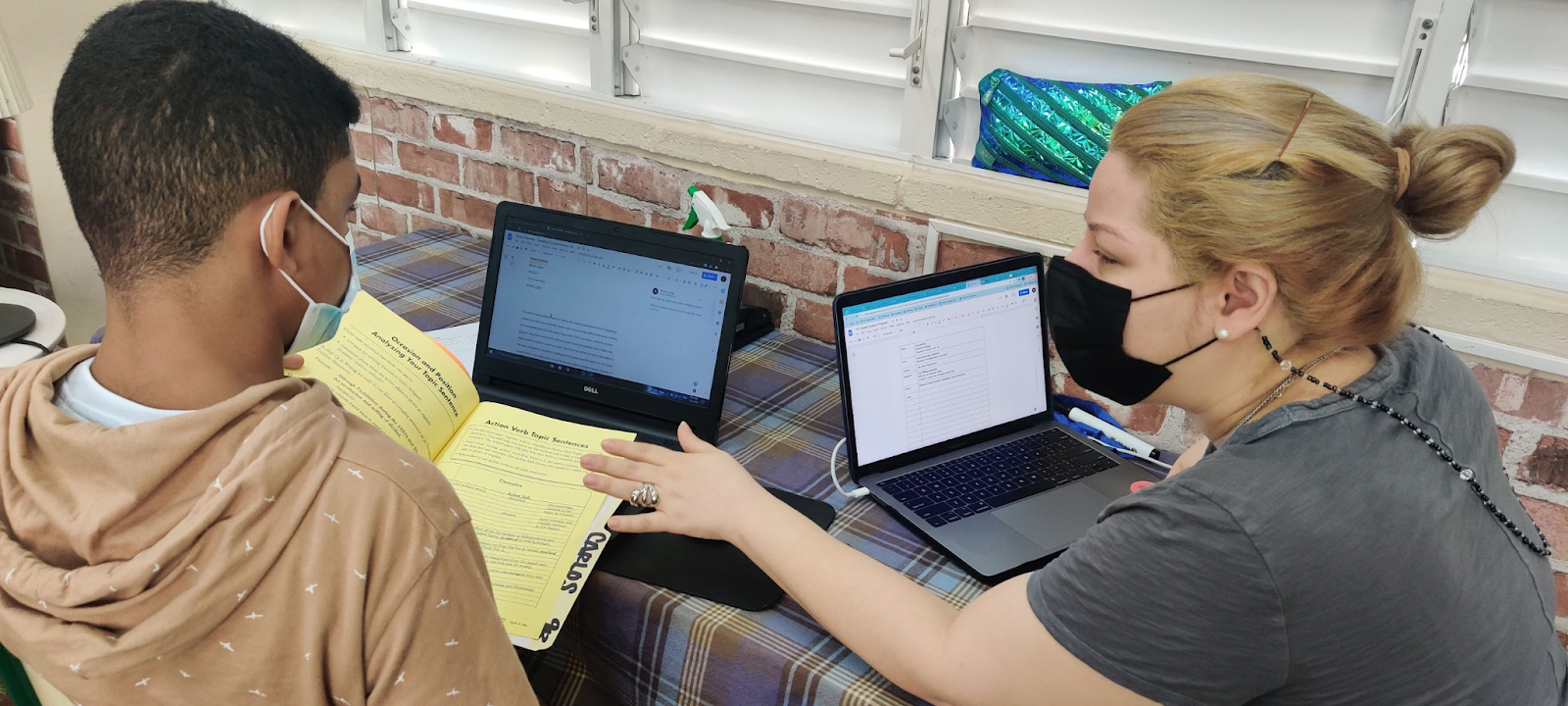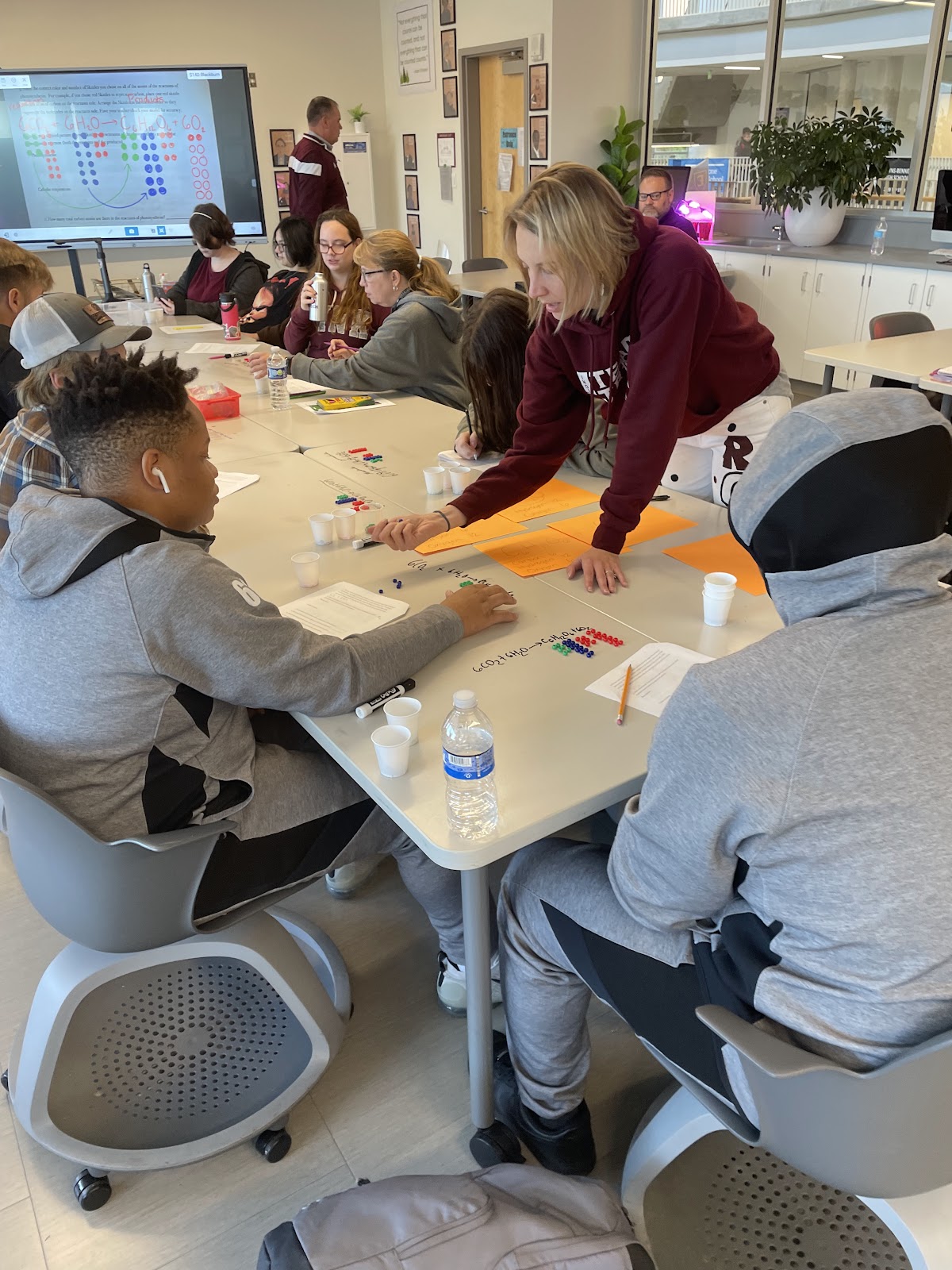Conferencing as a Method of Assessment
Teacher-student conferencing is a one-on-one conversation between a teacher and a learner to discuss the learner’s learning progress. It allows teachers and learners to gather information about what learners know and understand, what they are struggling with, and what they need to work on. This information can then be used to adjust instruction and provide additional support as needed.
Bright Spots
Gain inspiration from authentic examples of this strategy shared by teachers who have used them with their learners.
Creating your own Bright Spots? Let’s get them out into the world! Share yours here.

 Erin Kahn, a science teacher, sits 1:1 with a learner to understand where she is in her learning process.
Erin Kahn, a science teacher, sits 1:1 with a learner to understand where she is in her learning process. A chemistry teacher at Dobyns-Bennett High School in Kingsport, TN uses 1-1 and 1-2 conferences with special education students to help both her and them know what they know and don’t yet know about balancing equations.
A chemistry teacher at Dobyns-Bennett High School in Kingsport, TN uses 1-1 and 1-2 conferences with special education students to help both her and them know what they know and don’t yet know about balancing equations.